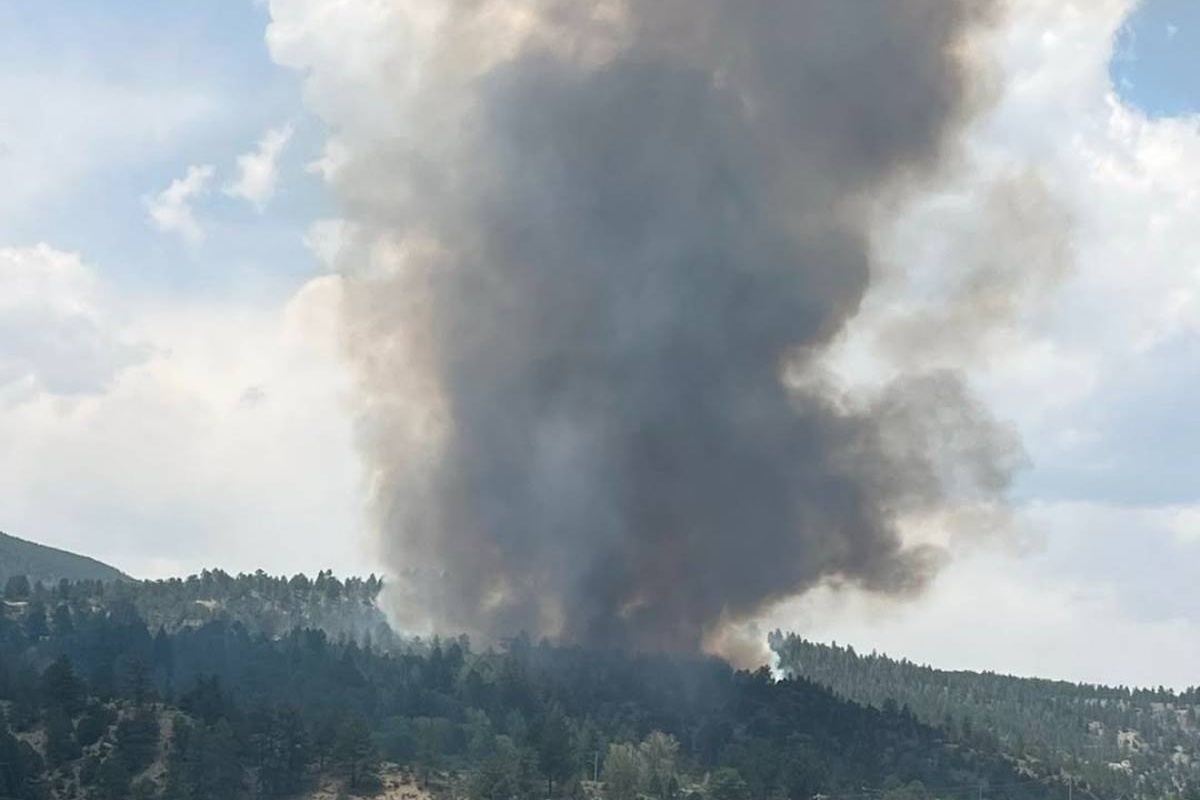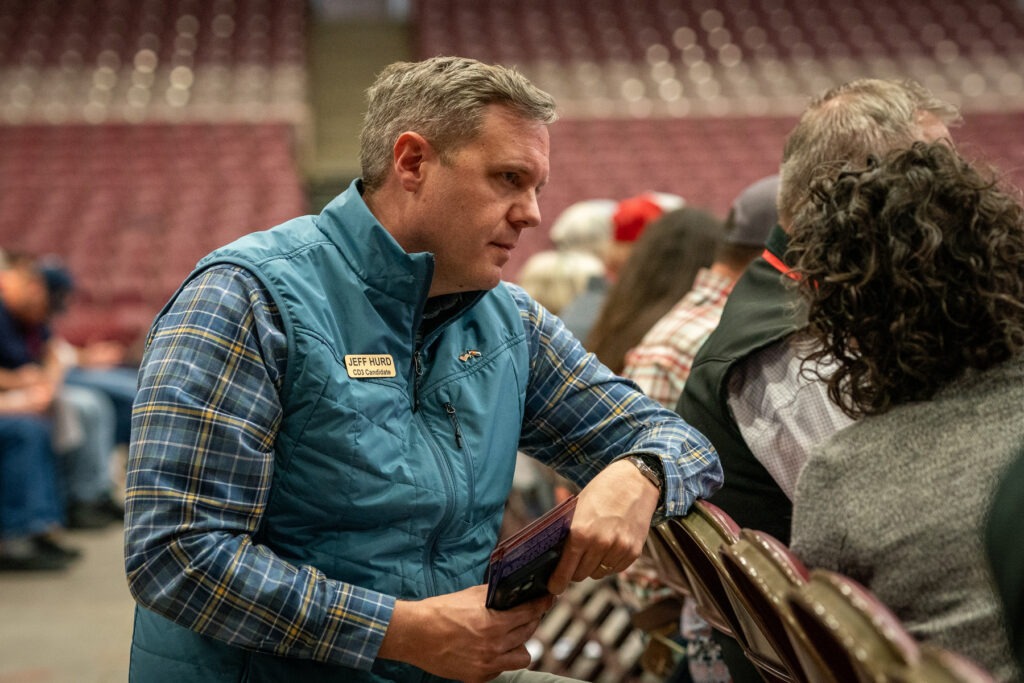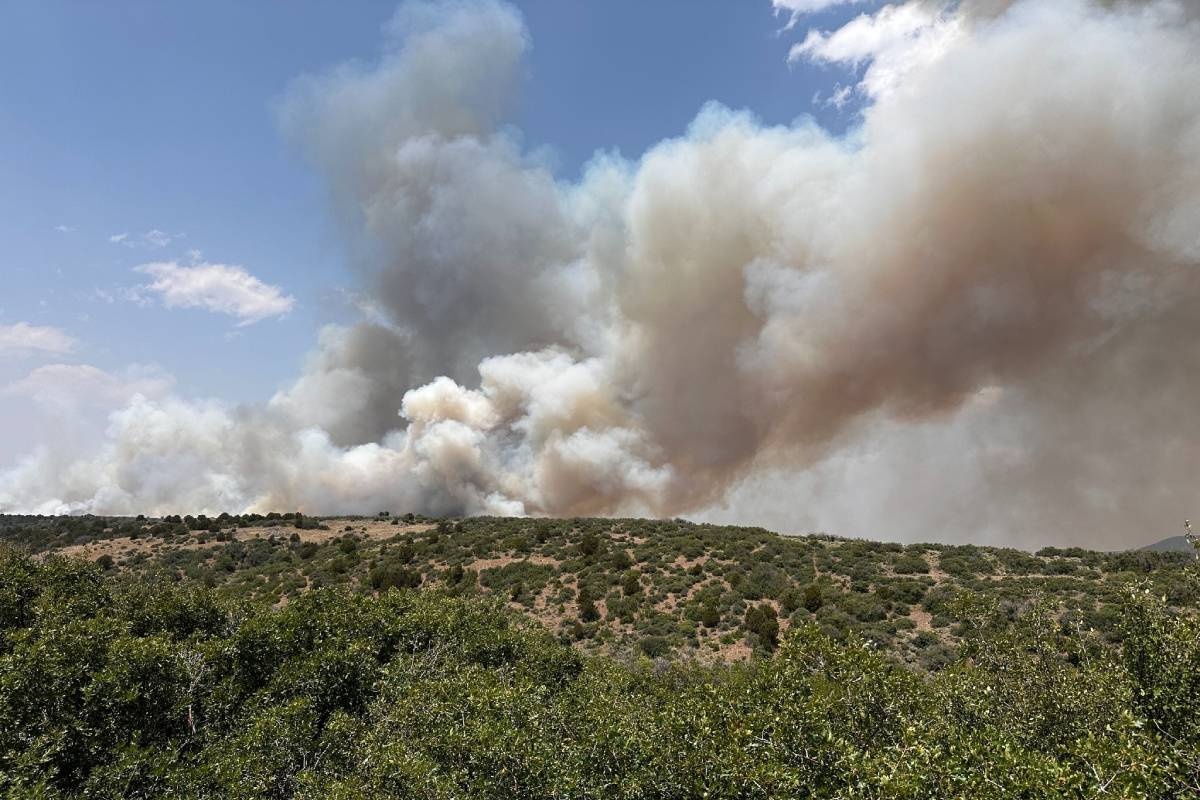Originally published on January 27, 2020 6:11 pm
For years during the Cold War, large swaths of land in Nevada were used for atomic weapons testing. Nuclear bombs were dropped just miles from small towns and the people living in them.
Over time, men, women and children started getting sick, and three decades ago, a federal law offered a formal apology and eventually created a program to both reach out to affected communities and pay partial restitution when appropriate. That program is ending soon, but the nuclear tests’ health effects are not.
To tell this story, we need to start back in the 1950s.
This clip from the Smithsonian Channel’s “A-Bombs Over Nevada” shows how fake cities were built up in the remote Nevada desert. Mannequins were placed inside the homes to represent a mom, dad and kids.
The goal was to see what would happen if a nuclear bomb was dropped on Main Street, in any town across the country. In total, the U.S. government conducted more than 1,000 nuclear tests.
But not all the people nearby were mannequins. There were communities with real people. There were the workers who built the fake towns. And tourists from around the world came to see the spectacle and destruction up close.
“We know there are health issues that can come about from radiation exposure,” said Dr. Laura Shaw with the University of Nevada, Las Vegas. Under the federal program, Shaw is providing free health screenings for people who lived in the nearby areas during that time, to those known as “downwinders.”
Primarily, she’s looking for cancer — “GI cancers, breast cancer, thyroid cancer, we have a long list.”

Shaw and other physicians have traveled around the state to provide free screenings for downwinders, which brought us to a rural health clinic in Ely, Nevada — a small mining town along the old Pony Express. Jim Assuras lived in the area from 1955 to 1961. He said he remembers being in school and watching videos about the nearby activity.
“They would show us these comforting movies, [with messages like] ‘duck and cover’ — cover your head and the radiation won’t bother you,” he recalled. “But the propaganda, it was actually comical.”
Assuras is 78 now. He was a teenager when the testing started. He said he’s had some minor health issues, but overall, he’s pretty good. And he’s not angry about any of it.
“You know, what could you do about it? Being upset’s not going to help your health any,” he said.
Shaw and Assuras are both here thanks to the Radiation Exposure Compensation Act. It set aside funds for health screenings and community outreach, particularly in underserved, rural areas.
It also established a trust fund for people who lived or worked in radiated areas during the tests and came down with one of several serious illnesses. Payouts have ranged from $50,000 for downwinders to $100,000 for uranium miners. According to the latest numbers from the Department of Justice, more than $2.3 billion have been awarded through the program.

Jenna Fox has helped run the program for the UNLV School of Medicine. She said if people want to qualify for compensation, it’s important that they get screened soon, because the program is set to end in July 2022.
“That’s when the fund ends,” Fox said. “Folks — if they are diagnosed with a cancer before that date — have to apply well before then to make sure that not only it’s filed in time, but also [that] the Department of the Treasury can cut the check in time.”
Fox said a simple claim can take at least four months and doctors can only get to affected areas about once a year.
“Sometimes we can’t see everybody that wants to be seen,” she said.
She isn’t happy the program is ending. These roving clinics not only give people free health screenings — they also provide valuable data.
“These cancers aren’t going to stop in 2022,” she said. “These people are going to be living longer and still have these issues.”
Radioactive materials are still present at the former Nevada Test Site and the effects of fallout have been felt as far away as the Midwest and New England. Studies have shown that environmental exposure to radiation has long-term effects on the development of children.
Last year, Idaho Sen. Mike Crapo introduced an amendment to the law to extend the program and expand its reach — to include Idaho, Montana, New Mexico and Colorado — and a companion bill has been introduced in the House, but neither has yet to get a hearing.
“We want to make sure that it’s in the public eye so that Congress can continue to support programs like this, especially for people who couldn’t afford other medical care,” Shaw said.
This story was produced by the Mountain West News Bureau, a collaboration between Wyoming Public Media, Boise State Public Radio in Idaho, KUER in Salt Lake City, KUNR in Nevada, the O’Connor Center For the Rocky Mountain West in Montana, and KRCC and KUNC in Colorado.
Copyright 2020 KUNR Public Radio. To see more, visit KUNR Public Radio.








